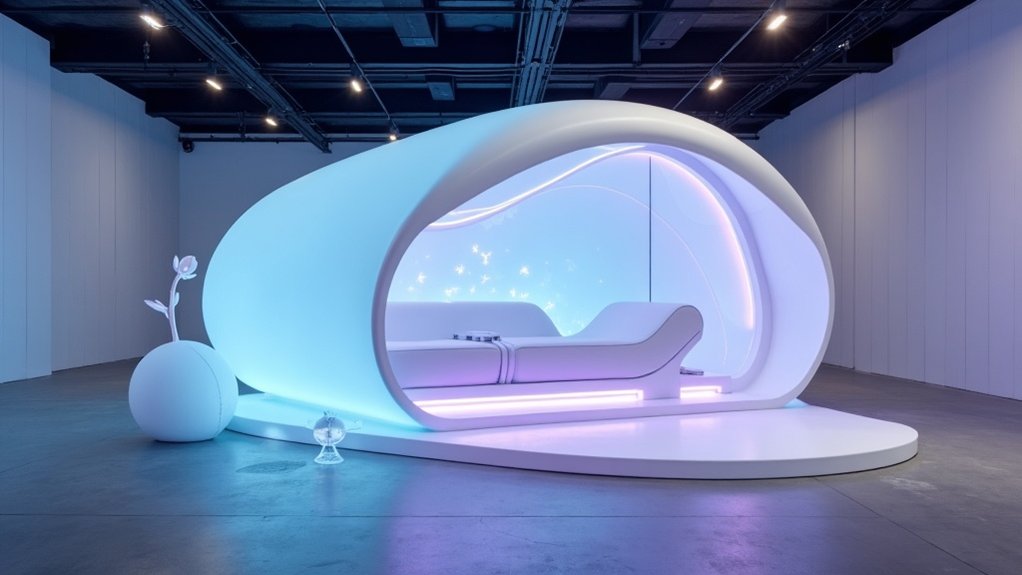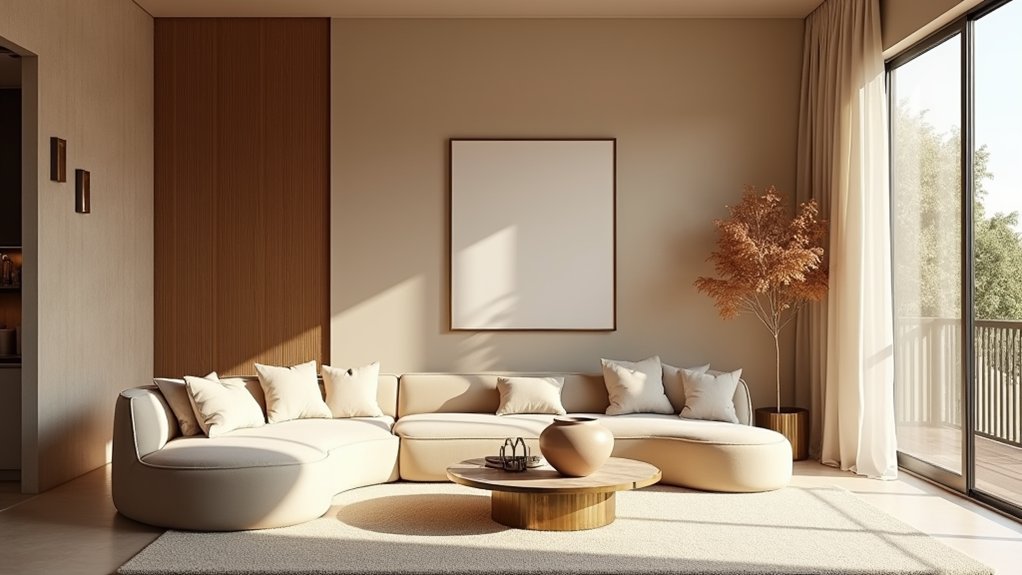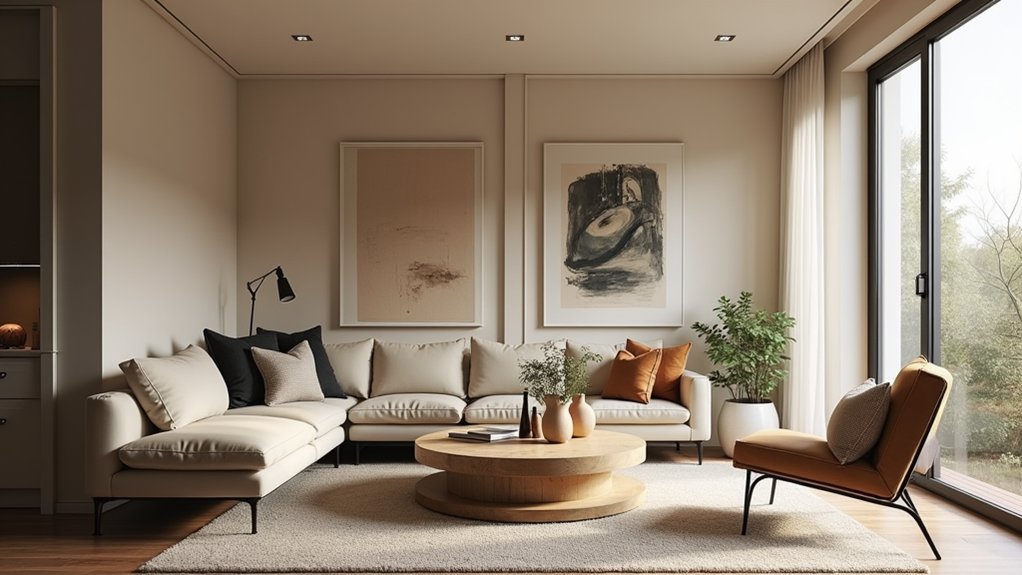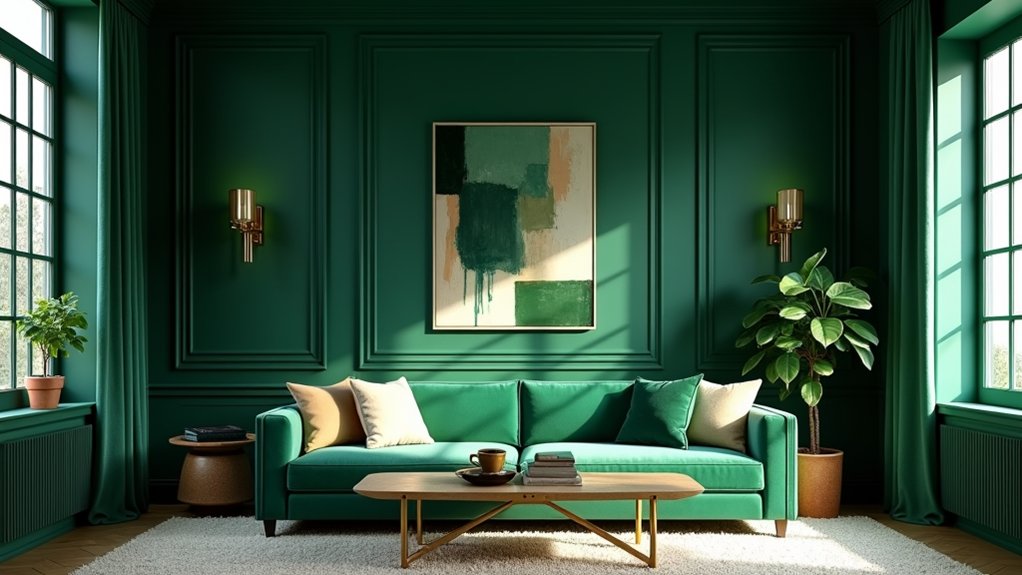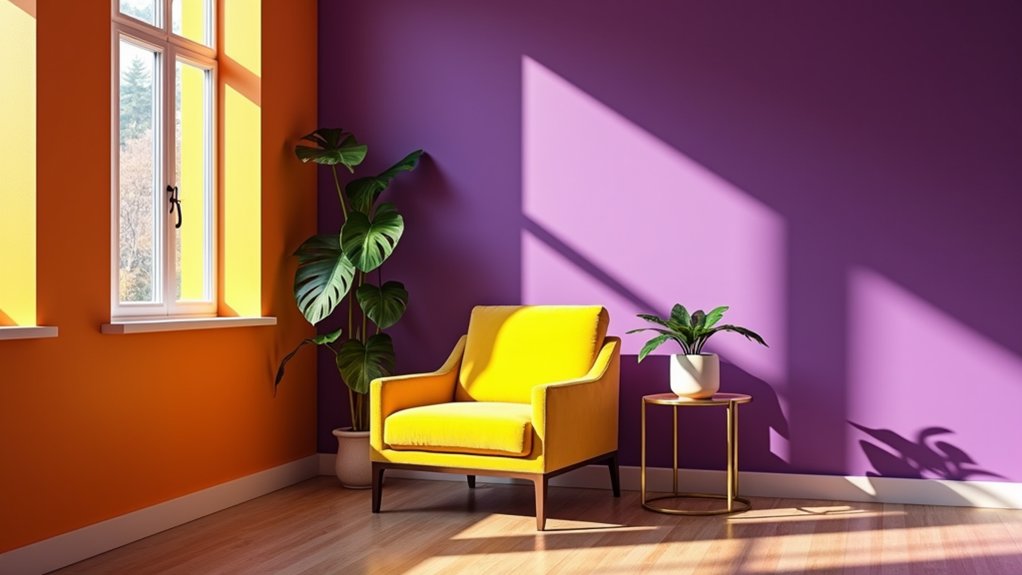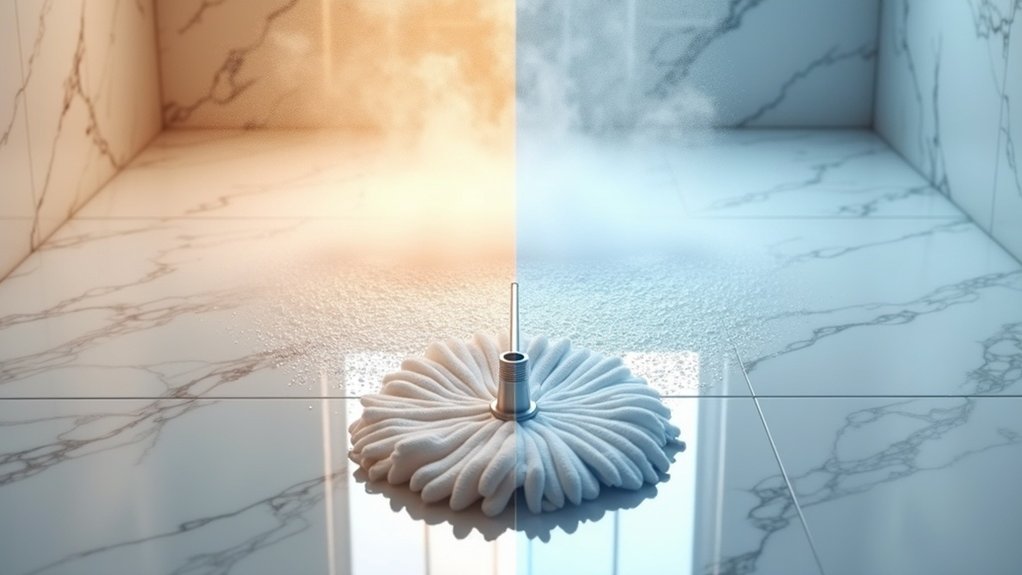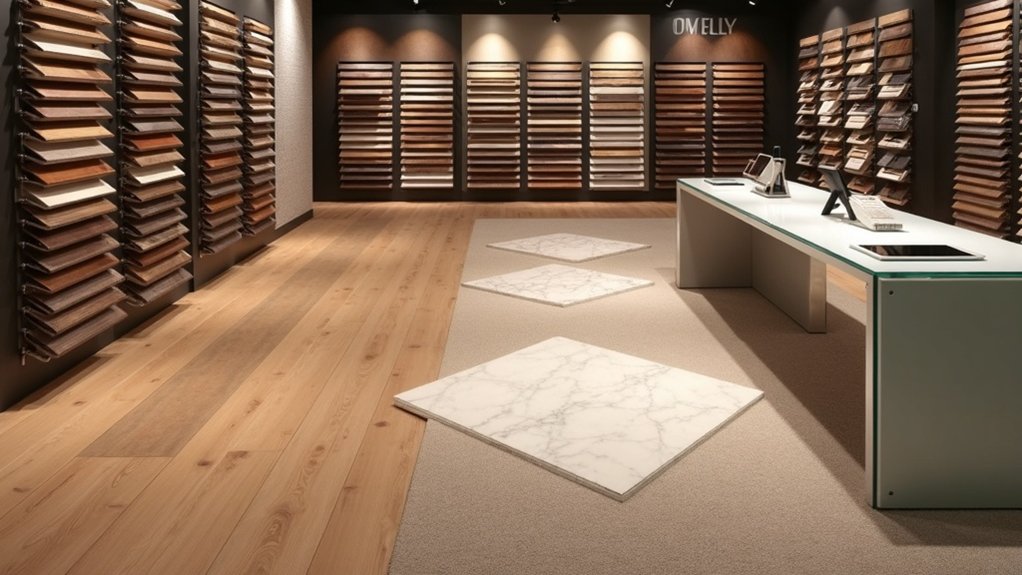A dramatic color revolution swept through the Las Vegas Market 2025, as rust, terracotta, and blush tones decisively displaced the cool grays that primarily filled furnishing showrooms for nearly a decade. The shift represents more than aesthetic preference—it signals a fundamental realignment toward warmth and organic sensibility in contemporary interiors.
Chocolate, caramel, and mocha-brown emerged as directional hues, while warm grays retreated to supporting roles behind saturated earth tones and rich wood finishes. Saturated hues are increasingly popular in modern design, contributing to this vibrant transformation.
Warm grays retreat as chocolate, caramel, and mocha-brown command attention alongside saturated earth tones and rich wood finishes.
This transformation extends beyond color into materiality and texture, where bouclé upholstery and dimensional fabrics dominate sofas and lounge chairs throughout showroom displays. Manufacturers accepted heavy weaves and plush textiles that amplify the tactile richness of warm palettes, creating environments that feel both sophisticated and inviting.
The textural movement aligns with biophilic design principles, incorporating natural wicker elements and woven details that harmonize with rust and terracotta focal points. Soft whites and buttery yellows appear strategically in textiles, providing gentle counterpoints to deeper earth tones.
Natural wood finishes experienced a remarkable resurgence, supporting the broader movement away from cool-toned surfaces that defined previous market cycles. Mixed metals—brass, matte black, and polished nickel—appear within single vignettes, creating layered compositions that feel intentionally curated rather than matched.
Live-edge details and visible joinery celebrate craftsmanship while reinforcing connections to natural materials. This materiality shift corresponds with evolving furniture forms, where organic, rounded silhouettes gain prominence in seating and tables, balanced by geometric statement lighting that acts as sculptural focal points.
Oversized pendants and mixed-material chandeliers anchor rust and blush-forward rooms, while accent pieces introduce burgundy and deep red notes that intensify warmth beneath statement fixtures. Green and blue secondary accents appear judiciously in rugs and decorative objects, offering measured coolness within mainly warm schemes.
The maximalist layering of materials and forms signals confidence in richer visual compositions, moving beyond minimalist restraint. Cordless lamps complement these layered interiors with placement flexibility, allowing designers to illuminate corners and surfaces without electrical constraints. Homeowners can update spaces with trend-aligned throw pillows and rugs that reflect these warm palettes without replacing entire furniture collections.
Regional Las Vegas preferences show bold colors gaining traction while neutrals maintain foundational appeal for broad market segments. The shift toward warmer palettes reflects multi-generational appeal, with younger consumers welcoming adventurous terracotta and orange families while established buyers gravitate toward sophisticated mocha and caramel tones that feel both current and timeless.

